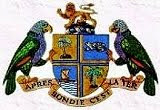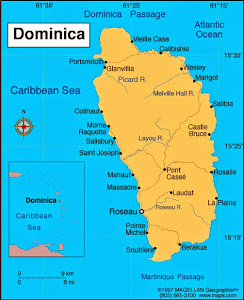
Blessed is the one who finds wisdom, and the one who gets understanding, for the gain from her is better than gain from silver and her profit better than gold. She is more precious than jewels, and nothing you desire can compare with her. Long life is in her right hand; in her left hand are riches and honor. Her ways are ways of pleasantness, and all her paths are peace. She is a tree of life to those who lay hold of her; those who hold her fast are called blessed.(Proverbs 3: 13-18)
DIVINE CARNATION

- Education For All
- I am creative, outgoing and love nature. I am at the top of it all and I know who got me there. My daily Prayer to the Most High God is-- "Oh that Thou wouldest bless me indeed, and enlarge my coast, and that Thine hand might be with me, and that Thou wouldest keep me from evil, that it may not grieve me!"
Search This Blog
Translate
Welcome
The island, which was originally occupied by Carib Indians(some of whose descendants remain), was discovered by Columbus in 1493 and colonised by the French in the 1600s. In 1805, the island became a British possession and remained under British rule until 1967, when internal self-government was granted, followed by full independence in1978.
The Capital of The Commonwealth of Dominica is Roseau. The official language of Dominica is English. A French patois Creole is spoken by most persons on the island.
The Commonwealth of Dominica became an independent state on November 3rd 1978.
The flag of The Commonwealth of Dominica is
 Green, with a centered cross of three equal bands - the vertical part is yellow (hoist side),black, and white and the horizontal part isyellow (top), black, and white; superimposed in the center of the cross is a red disk bearing aSisserou parrot encircled by 10 green, five-pointed stars edged in yellow; the 10 stars represent the 10 administrative divisions (parishes).
Green, with a centered cross of three equal bands - the vertical part is yellow (hoist side),black, and white and the horizontal part isyellow (top), black, and white; superimposed in the center of the cross is a red disk bearing aSisserou parrot encircled by 10 green, five-pointed stars edged in yellow; the 10 stars represent the 10 administrative divisions (parishes).
Dominica Coat of Arms

The shield is supported by two Sisserou parrots (Amazona imperialis). They are perched on a strip of parchment on which is written in Creole, the national motto: "Apres Bondie C’est La Ter". In the established form accepted by Creole linguists today it would be written: "Apwe Bondye Se La Te." It means, "After God it is the Land". However "La Te" can be translated to mean, the land, the Earth or the soil. But the message of the motto for the people of a mainly agricultural island is that after praising God first, the next most important thing is the land in the form of bearing fruit. It can also be extended to mean the land in the nationalist sense that after your commitment to God then comes your commitment to your country. The use of Creole represents also the influence of France on the island and the part played by African traditions and language in the creation of the Creole heritage.
Dominica

Nature Island